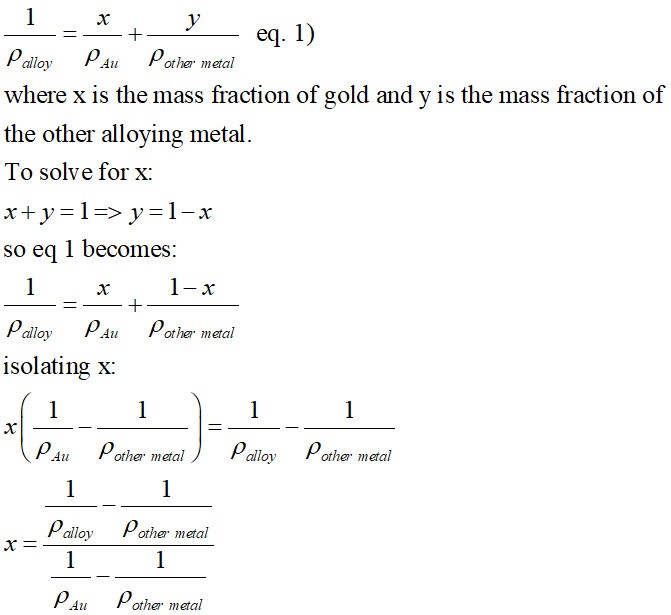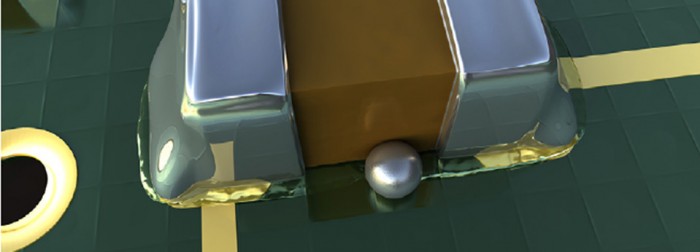Adriana writes,
Dear Dr. Ron
I’m trying to program the equation for determining the weight fraction of gold in scrap metal from the density of the scrap metal. Can you help?
Best,
Adriana,
Dear Adriana,
One thing to note is that we can only calculate the mass fraction of gold accurately if we know what the alloying metal is. This calculation is not valid for more than one alloying metal.
We also need to know the density of the alloy,the density of gold, which is 19.31 g/cc and the density of the alloying metal. Two common alloying metals are copper (r=8.96 g/cc) and silver (r=10.49 g/cc).
The derivation of the mass fraction of gold from the density of the alloy and the density of gold and the alloying metal is given in Figure 1 below.

Figure 1. The dervivation of the mass fraction of gold in an alloy.
To use the derived equation, let us say we want to measure the mass fraction of gold in a ring that claims to be 14-karat gold. First, we measure the density of the gold ring using the wet gold technique. We find the density to be 12.2 g/cc. Typically, gold in rings is alloyed with copper, so we use copper’s density in our calculations. Using the equation derived for x in Figure 1,we find x to be 0.505 or about 50% gold. Remembering that the karat scale is such that 24-karat gold is 100% gold and 12-karat gold is 50% gold, we see that our ring is only 12-karat gold, not 14-karat gold.
I developed an Excel® spreadsheet which performs these calculations. See the results of the example above in Figure 2. If you would like a copy of the spreadsheet, email me at [email protected].

Figure 2. The output of the Excel® spreadsheet to calculate the mass fraction of gold in an alloy.
Cheers,
Dr. Ron



